Let's talk about real customer awareness today!
Are you one of those who thinks:
- RO technology is the best way to purify your water?
- Multiple stages of purification results in better drinking water? (say, RO + UV + UF + TDS + Alkaline + Copper + Mineralizer + TDS + many more)
- The lower the TDS of water, the better it is for drinking?
If you said Yes, Well...you’re wrong! In fact, each of these can actually worsen your water quality, if used incorrectly.
Big Brands want you to buy expensive purifiers by adding unnecessary or say gimmicks to their product to sell them at higher profits. ROs are just another gimmick name for attracting ignorant customers and we don't want you to fall for their dirty salesy strategies. This is just one of their Business tactics…
...but not for us!
There's a huge need for everyone to understand the quality of drinking water and the purification techniques available and to choose the purifier best suited for their needs. Let's get started!
So, What is TDS in Water?
Water is a great solvent and can dissolve a number of impurities/minerals in it. We measure the amount of impurities dissolved in water through a parameter called Total Dissolved Solids (TDS) expressed as milligrams per liter (mg/l). But did you know that some of these impurities in water are actually healthy for you? Yes, that's right!
TDS levels of municipal supply water can usually range from 100 to 500, whereas sea water can have a TDS as high as 35000 due to the presence of high amounts of salts and other impurities in it. That is why, Sea water is not suited for drinking purposes at all.
Most Indian households typically get water supply with TDS levels ranging from 50-5000 (depending on the source of your water supply). It is important that you measure the TDS of your supply water before deciding on the right water purifiers for you.
You can measure the TDS of water using a simple TDS meter or by asking a local RO technician nearby.
Also Note:
- TDS is a measure of only dissolved impurities. A low TDS does not necessarily mean your water does not have other large organic or inorganic impurities.
- The TDS levels in an area are generally stable but it does fluctuate seasonally. For example during monsoons, TDS of supply water tends to drop a little.
What is the ideal TDS Level for drinking water?
Water quality standards vary across the world depending on the standardization agency in the region. Based on the recommendations by the World Health Organization (WHO) and Bureau of Indian Standards (BIS), Peore has put together these recommendations for you:
|
TDS Levels of water supply
|
Mineral Levels
|
Fit for drinking?
|
Recommended Purification Technology
|
|
0 to 100
|
Very Low
|
No
|
Gravity filters, MF or UF
|
|
100 to 150
|
Low
|
Acceptable
|
UF or NF
|
|
150 to 250
|
Ideal
|
Ideal
|
UF or NF
|
|
250 to 500
|
High
|
Acceptable
|
NF
|
|
500 to 1200
|
Very High
|
Acceptable in absence of any other alternative
|
NF
|
|
1200+
|
Hard Water
|
Not Acceptable
|
RO
|
Ideal Drinking Water (TDS 150 to 250):
The ideal TDS for drinking water should be between 150 to 250. In this TDS range, your water has an optimal amount of healthy minerals present. Balanced! As all things should be.
If the TDS of your supply water is in this range, a MF, UF, or NF purification can be used to purify such water depending on your needs and TDS fluctuations in your area.
For TDS < 100:
Water that has TDS < 100 is considered demineralized as it lacks several healthy minerals that are needed for the human body. Drinking such water can cause several long-term health issues. Most domestic RO's generally purify water in this range. If your supply water has TDS < 100, we recommend you to use only MF or UF purifiers as it does not reduce TDS and removes all bigger impurities.
For TDS between 100 to 150:
Such water is low in minerals but completely acceptable for drinking purposes. Since human bodies get their daily dose of essential minerals from other sources as well, it is fine to drink water having TDS between 100-150. If your supply water has TDS in this range, you can use an MF, UF, or NF purification depending on your needs and TDS fluctuations in your area.
For TDS between 250 to 500:
Water with this level of TDS is also completely acceptable for drinking purposes as long as it is treated and has no heavy impurities. The only drawback is that the water might have a slightly hard taste and might feel heavy. Many unpolluted natural sources of water have TDS in this range and human beings have been drinking that water for many centuries. We recommend using only NF purifiers for such water. Also, ensure that your water purifier is equipped with a high quality carbon filter to further improve the taste of water.
For TDS between 500 to 1200:
The drinking water with TDS ranging from 500-1200 has high quantities of dissolved impurities. Such water typically tastes hard and can also indicate the presence of heavy impurities like Arsenic, Fluoride, etc. Bureau of Indian Standards (BIS) allows usage of such water for drinking purposes only in absence of any other alternative. We recommend using NF purifiers for such water.
For TDS > 1200:
The drinking water with TDS>1200 is termed as Hard water and has high amounts of salts and other impurities dissolved in it. Always filter such water with RO purifier to make it safe for drinking.
What is the ideal pH level for drinking water?
Let’s now talk about the pH level of water. It is a measure of acidity and alkalinity in a substance and it is measured on a logarithmic scale of 0 to 14. A level of < 7 indicates the acidic nature of water and a level of > 7 indicates basic or alkaline nature. A perfect 7 indicates neutral water (natural state of pure water).
Several brands claim that drinking water with high pH is healthy for the human body. But, again, there has been little to almost no research done on this subject and hence these claims are not scientifically backed.
To understand this better, let's look at the pH within our bodies:
- Human blood maintains a normal pH of 7.35 to 7.45
- pH of the fluids in our stomachs ranges between 1.5 to 3.5
- Our liver maintains a neutral pH of 7
Clearly, different body functions need a different pH and this is why our body strictly maintains its pH at various places.
That being said, human bodies are designed to handle changes in water’s pH and our kidneys play an important role in it. They maintain acid-base balance in the body by reabsorbing cells bicarbonate HCO3− from the urine back to the blood and by secreting hydrogen H+ ions into the urine. By adjusting the amounts reabsorbed and secreted ions, they balance the bloodstream's pH.
WHO recommends an ideal range of pH between 6.5 to 8 for drinking water. As long as your pH is in this range, you're good.Drinking too alkaline or too acidic water can be harmful to the body. Trying to externally modify the body's pH can be really harmful, especially to your kidneys which have to bear the brunt of cleaning more.
Reverse Osmosis (RO) purification can drop the pH of water as it removes even the smallest of impurities from water. We recommend you to use a mineralizer or an alkaline filter only in exceptional cases where pH is less than 6. Most alkaline and mineral filters are chemical-based and should be avoided, if not needed.
Factors that influence drinking water quality
There are some more factors that can affect the water quality and it's very important to be aware of them before buying a water purifier in order to drink safe drinking water. Let's go through them one-by-one!
#1 - Source of Water
Every home has a unique source of water, and it needs to be purified differently. Some of us are fortunate enough to have access to clean municipal water supply while many of us rely on bore-well or natural sources of water like rivers and ponds which are susceptible to industrial and agricultural pollution. Several residential apartments receive water from water tankers for which sources can vary. Apart from the source of water, leakages in the pipeline, rusting, etc. can also add to the impurities in your water.
Consider using an NF or RO purifier if you're not sure about the source of your supply water.
#2 - Usage of TDS Adjuster to increase TDS
RO water typically reduces the TDS to alarmingly low levels, which is not good…In order to increase the TDS back to its normal levels, certain water purifier brands have started using a device called a TDS adjuster.
These TDS adjusters are nothing but a bypass valve that mixes impure water with purified RO water to increase the TDS. Users can adjust the percentage of impure water being mixed and hence control the TDS of output water. Using such adjusters completely defeats the purpose of purification as the impure water can mix toxic impurities and microbes back into the purified water. We strongly recommend you to not use such devices!
#3 - Regular servicing of Water Purifiers
Just like any sieve, filters in water purifiers get blocked after some time due to the impurities captured. It is very important to regularly change the filters of your water purifier (preferably every 6 months or a maximum of 12 months). If not maintained well, the filters can allow impurities to pass through and can also serve as a breeding ground for microbes.
Conclusion
- Water below TDS 100 is considered demineralized & is not fit for drinking purposes. The ideal TDS for drinking water should be between 150 to 250 while it is completely acceptable to drink water with TDS up to 500.
- The ideal pH of water is between 6.5 to 8. Drinking too alkaline or too acidic water can be harmful to the body.
- You should choose your water purifier according to the TDS of your supply water and the reliability of the source of your water.
- Be sure to regularly service your water purifiers and get your water tested periodically.
"A wise man always makes his own decision but an ignorant man follows public opinion." - Grantland Rice
So, make a switch for good, get your water purifier customised today according to your house’s needs because that's what an aware customer would do!
About Peore
Founded by an IIT Delhi alum, Peore aims to provide everyone with access to high-quality drinking water (minus the gimmicks).
Supply water quality varies for every household and we believe that there is no one silver bullet that can solve purification needs for every household. Our goal is to provide the right purification system to our consumers through generating awareness, a strong on-ground presence, and innovations like Nanofiltration and our proprietary Tru-UV technology.

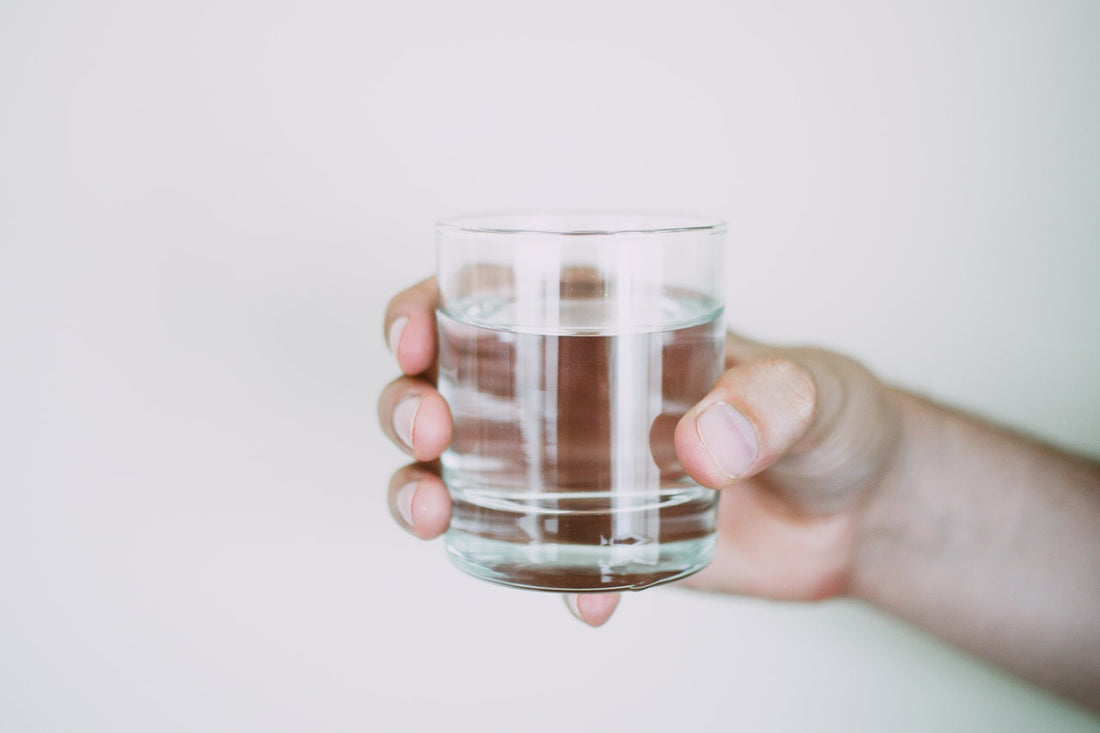

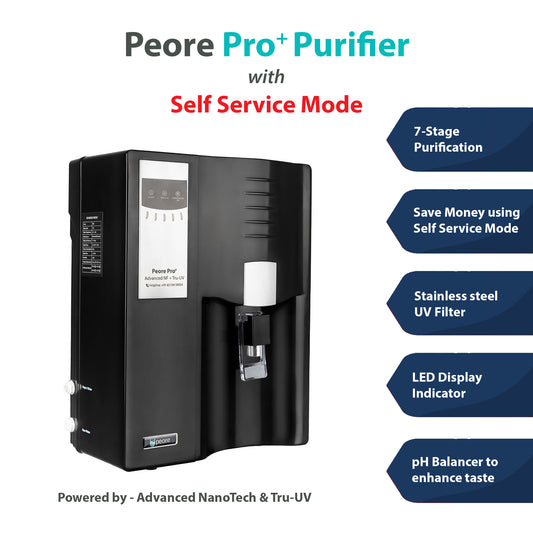
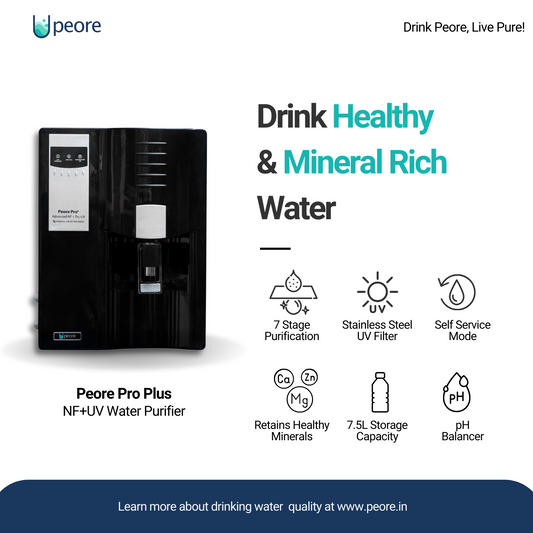
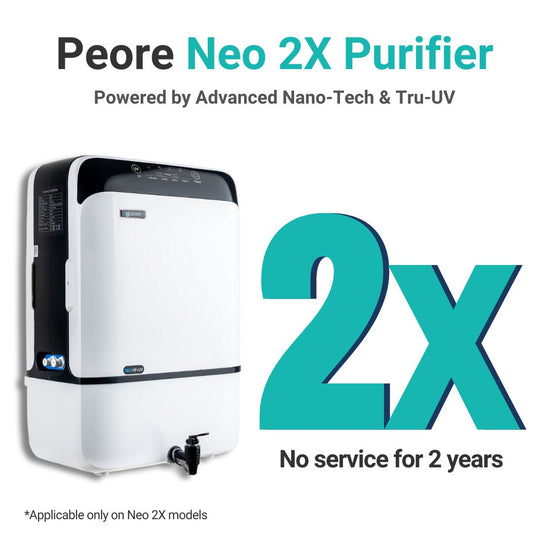
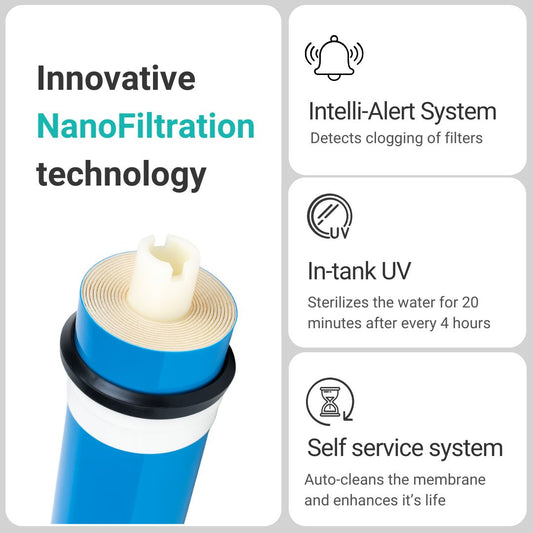
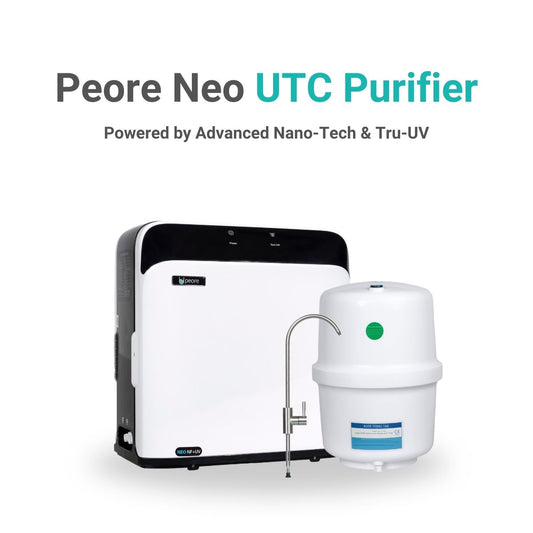
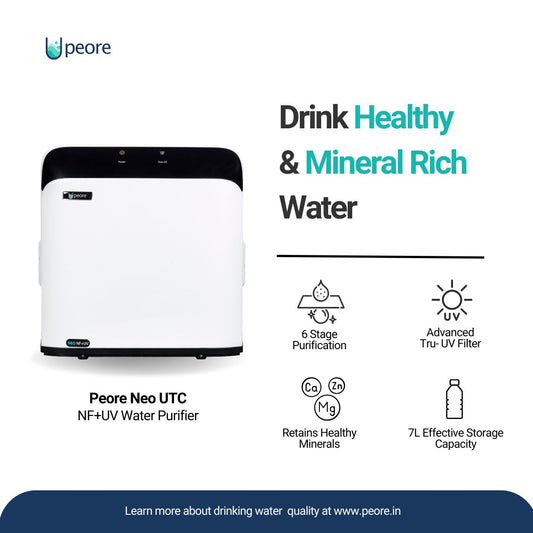
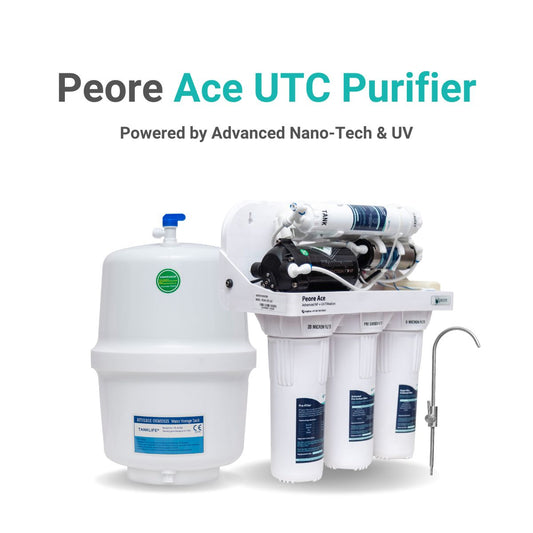
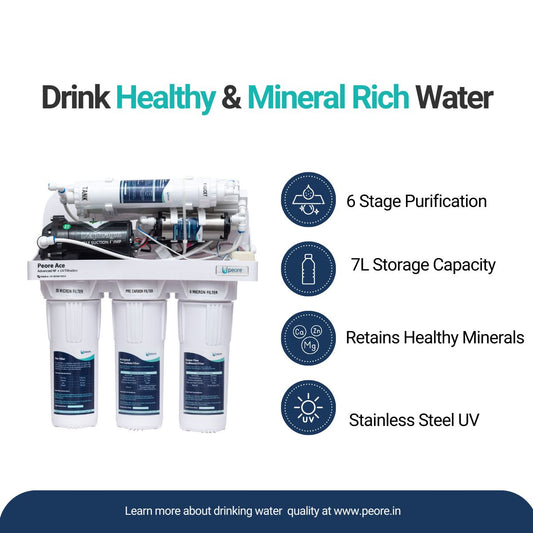
12 comments
Very good and informative blog to decide on the type of water purifier one needs, I am presently using a gravity based water filter and just came to know that the TDS of it is around 500-550, and was thinking to purchase a RO but was aware that RO water is not good for health as it is deficient of all minerals, hence was searching for an alternative and the one provided above i.e. NF is the best one which will purify the water without compromising the essential minerals.
Thanks for keeping healthy by giving us the best daily need ,the water in it’s best form.yes all blindly go for RO purifiers and drink water which has tds as less as 13
informative , i am also looking for such type of filtration technique for my household borewell(960ft ) water having a TDS of 560 . please contact with me .
Very useful information.
Kindly let me know the required tests to be conducted and their allowable values for drinking water.
Such a lovely post thanks 🙏